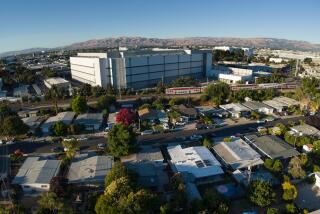Caltech to Be Home for Most Powerful Research Computer
- Share via
The world’s fastest and most powerful computer will be installed at Caltech next spring to aid in researching such complex scientific issues as global changes in the environment and climate, according to an announcement that is to be made today in New York City.
The supercomputer, capable of making 32 billion operations per second, will be the cornerstone of a cooperative program involving 14 research institutions called the Concurrent Supercomputing Consortium.
Known as the Delta System, the computer is being built by Intel Corp. as part of a research collaboration between the firm and Caltech. The system employs many high-speed microprocessors, which are linked through a communications network.
The computer’s performance can be enhanced by adding more microprocessors through a process called concurrency. The system also reveals how rapidly the computer business is changing because it is several times more powerful than the most powerful computers available just a few years ago.
Such high-speed computers are essential to major research projects because they allow scientists to keep tabs on billions of bits of data that may change every second. That is true for such matters as the study of the atmosphere because information from millions of sensors changes continually, and only a supercomputer can make it possible for scientists to keep track of data and analyze results.
“I am delighted that the most powerful computer in the world will be housed at Caltech,” Thomas E. Everhart, president of Caltech, said in a statement.
Development of the Delta System and related Caltech research was funded by the Defense Advanced Research Projects Agency. The supercomputer will be used for a range of projects, including study of the depletion of the ozone layer, simulating aerodynamic characteristics of high-performance aircraft, the human genome project and various space projects by the Jet Propulsion Laboratory.
Members of the consortium include JPL, several national laboratories, DARPA, National Aeronautics and Space Administration, National Science Foundation, Purdue University and Intel.
More to Read
Inside the business of entertainment
The Wide Shot brings you news, analysis and insights on everything from streaming wars to production — and what it all means for the future.
You may occasionally receive promotional content from the Los Angeles Times.










